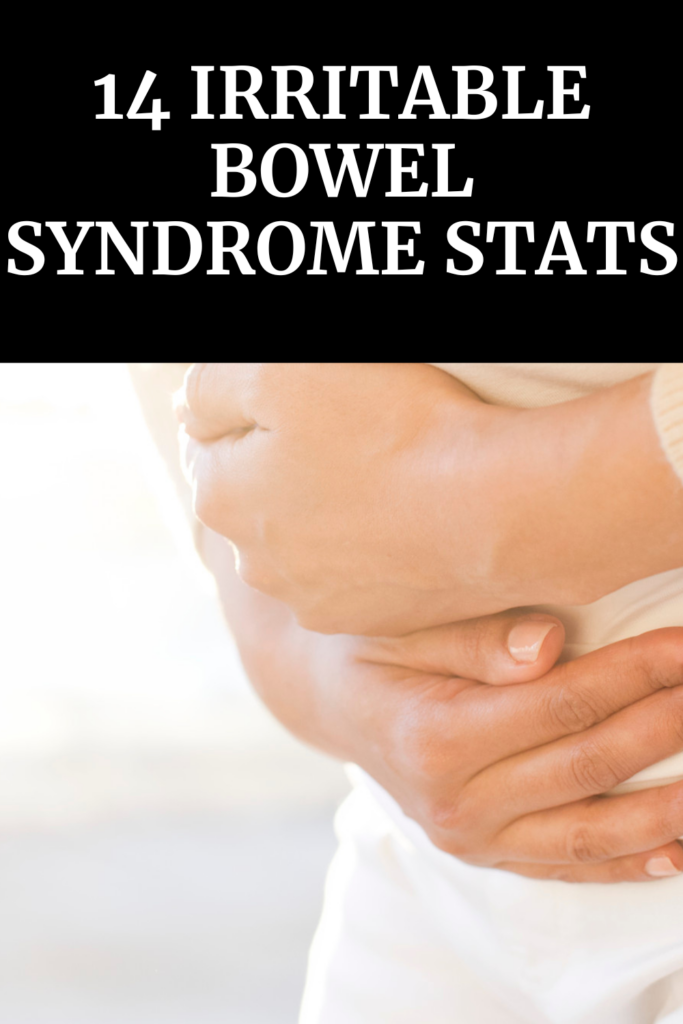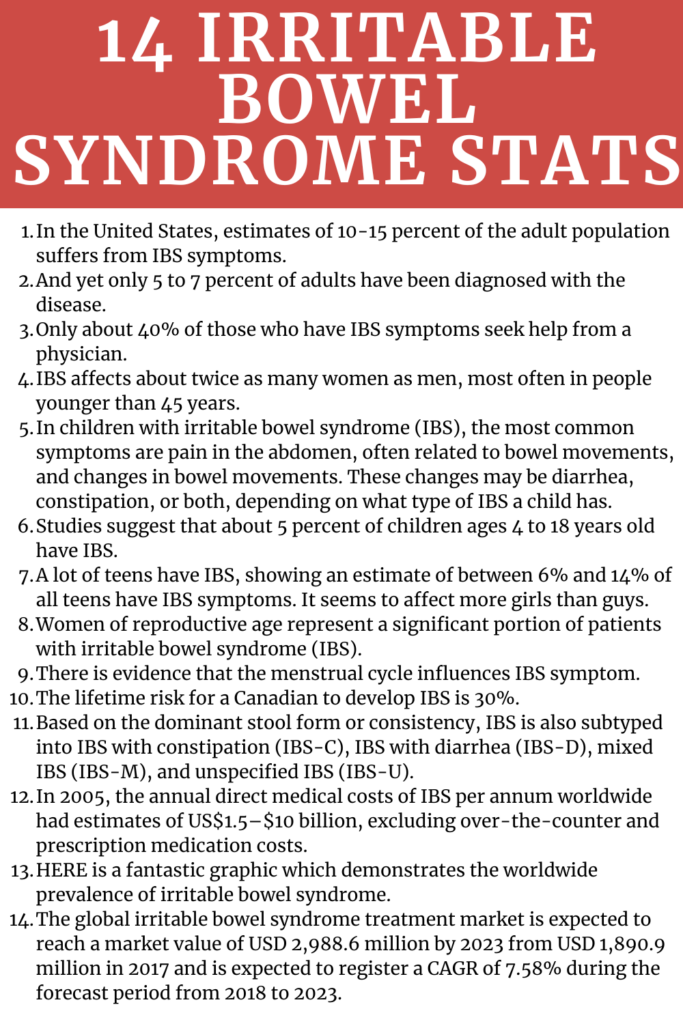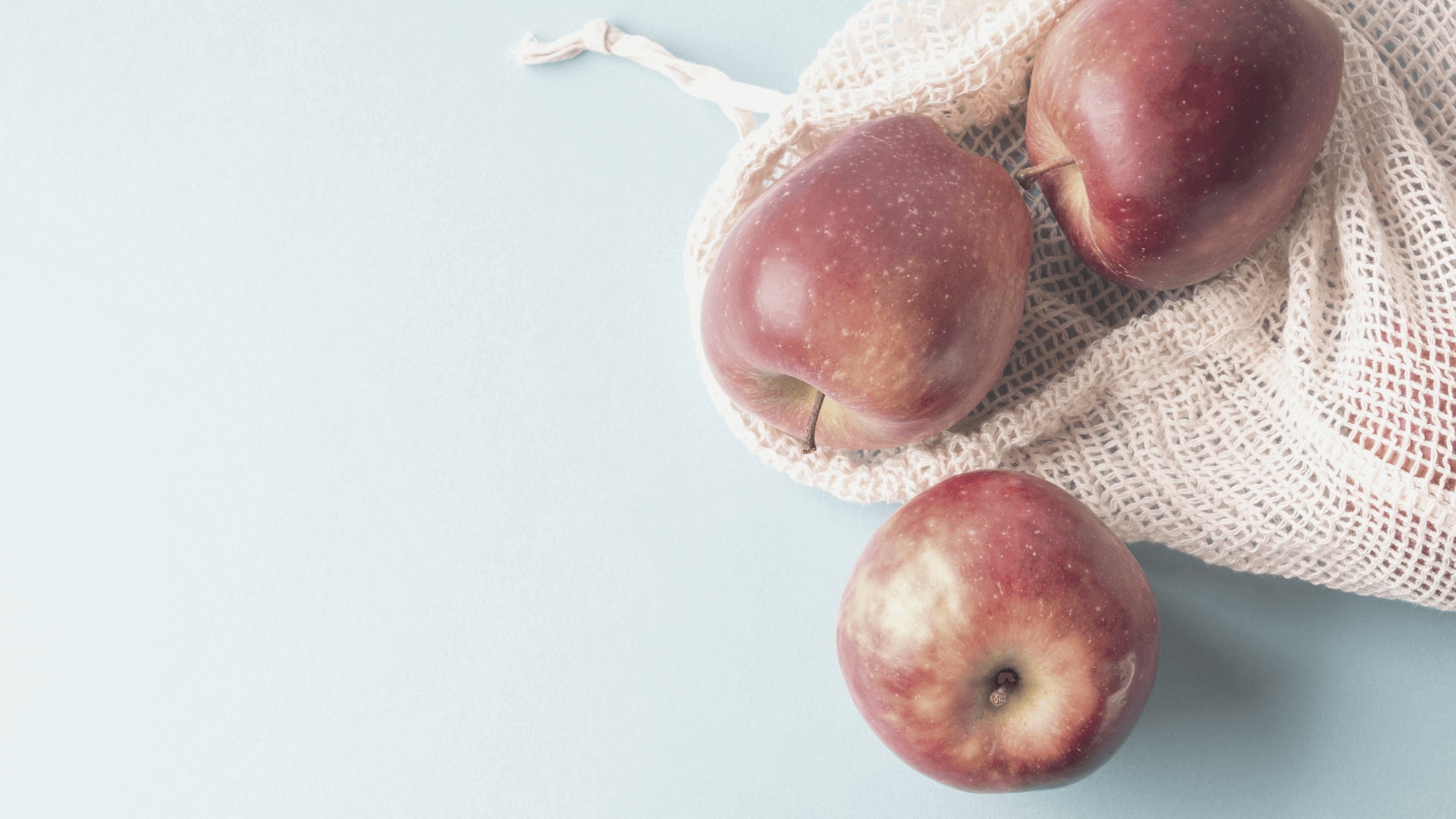If you like stats and numbers, you’ll enjoy these 14 irritable bowel syndrome stats and numbers today.
Let me first remind you that IBS and IBD are not the same things.
In fact, if you watched the 60 Minutes segment on the microbiome recently, they are perhaps not even clear on the differences.
I was livid when someone called IBD, “Irritable Bowel Disease.” Um, no. I mean, could they not have edited that part? A simple edit to what it really is, “Inflammatory Bowel Disease.”
Then again, they got many things wrong during the microbiome and probiotic segment.
Anyways, if you’re still confused, check out the differences between IBS and IBD.
14 Irritable Bowel Syndrome Stats
Click HERE to save this post for later.

- In the United States, estimates of 10-15 percent of the adult population suffers from IBS symptoms.
- And yet only 5 to 7 percent of adults have been diagnosed with the disease.
- Only about 40% of those who have IBS symptoms seek help from a physician.
- IBS affects about twice as many women as men, most often in people younger than 45 years.
- In children with irritable bowel syndrome (IBS), the most common symptoms are pain in the abdomen, often related to bowel movements, and changes in bowel movements. These changes may be diarrhea, constipation, or both, depending on what type of IBS a child has.
- Studies suggest that about 5 percent of children ages 4 to 18 years old have IBS.
- A lot of teens have IBS, showing an estimate of between 6% and 14% of all teens have IBS symptoms. It seems to affect more girls than guys.
- Women of reproductive age represent a significant portion of patients with irritable bowel syndrome (IBS).
- There is evidence that the menstrual cycle influences IBS symptom.
- The lifetime risk for a Canadian to develop IBS is 30%.
- Based on the dominant stool form or consistency, IBS is also subtyped into IBS with constipation (IBS-C), IBS with diarrhea (IBS-D), mixed IBS (IBS-M), and unspecified IBS (IBS-U).
- In 2005, the annual direct medical costs of IBS per annum worldwide had estimates of US$1.5–$10 billion, excluding over-the-counter and prescription medication costs.
- HERE is a fantastic graphic which demonstrates the worldwide prevalence of irritable bowel syndrome.
- The global irritable bowel syndrome treatment market is expected to reach a market value of USD 2,988.6 million by 2023 from USD 1,890.9 million in 2017 and is expected to register a CAGR of 7.58% during the forecast period from 2018 to 2023.

Irritable Bowel Syndrome Isn’t Going Away
I’ve been predicting it for a long time, but the work I have been doing for a decade will only become more relevant.
Here is a great depiction of the market size of those with either IBS-C or IBS-D from Grand View Research.

It’s there to see in plain sight.
Those who need treatment options and solutions are on the rapid increase.
The problem is that what this graph is trying to show is how much money there is to be made with drugs and medications.
While that might be an initial and/or temporary mask for you, it’s definitely not the forever solution you’ll need.
This is because you’ll need to also work hard at managing IBS with diet and lifestyle as well.
And last, but certainly not least, you’ll need to identify the root cause.
Read more on that via the 7 roots causes of IBS below.
Sources: HERE, HERE, HERE, HERE, HERE, HERE, and HERE.
If you liked this post, you might also like:
Xox,
SKH
🤰 bloating be gone! weight loss through optimal gut health for women
💃ʜᴇᴀʟ ʏᴏᴜʀ ɢᴜᴛ. ʜᴇᴀʟ ʏᴏᴜʀ ʟɪfe.
🫶🏻 founder gutbyome.com


![How Can We Heal Instead of Just Deal [Episode 50 with Rachel Scheer]](https://agutsygirl.com/wp-content/uploads/2022/09/ep-50-rachel-scheer-podcast-featured-agutsygirl.com_.png)




